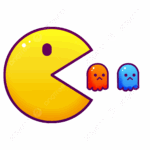kuku kube sets the stage for this enthralling narrative, offering readers a glimpse into a story that is rich in detail and brimming with originality from the outset. This innovative game, originating from the desire to enhance visual cognition, challenges players to identify subtle differences in color patterns, making it not just a game but a powerful tool across various fields such as education and cognitive therapy. From classrooms to community events, kuku kube finds its place in enhancing color recognition and sharpening visual acuity, engaging players in diverse real-world applications.
As we explore the mechanics, variations, and impact of kuku kube, we uncover how this simple yet compelling game fosters cognitive development while bringing communities together. Its versatility makes it a standout choice for educators and casual players alike, paving the way for a deeper understanding of visual perception and cognitive skills through engaging play.
Introduction to Kuku Kube
Kuku Kube is an engaging visual perception test that challenges individuals to identify a different colored square among a grid of squares that are predominantly the same color. The game originated from cognitive psychology research into color perception and visual acuity, aiming to measure an individual’s ability to discern subtle differences in color and contrast. This concept has gained popularity as a simple yet effective tool for evaluating visual discrimination.
The purpose of Kuku Kube extends beyond being just a game; it finds applications in various fields such as design, marketing, and psychology. In design, Kuku Kube helps assess color sensitivity, ensuring that designers create visually appealing and accessible products. In marketing, understanding color perception can enhance branding strategies by aligning product colors with consumer preferences. Psychologists utilize Kuku Kube as a means to study visual perception and cognitive processing, providing insights into how individuals interact with their visual environments.
Real-world Applications of Kuku Kube
Kuku Kube serves as a practical tool in numerous real-world scenarios, showcasing its versatility and importance in diverse domains. The following examples illustrate how Kuku Kube is effectively applied:
- Color Sensitivity Testing: Kuku Kube is often used in ophthalmology clinics to evaluate patients’ color vision. The test helps determine issues related to color blindness or other visual impairments, guiding further medical interventions.
- Design and User Experience: Graphic designers and UX professionals use Kuku Kube to gauge their own sensitivity to color combinations. This can lead to more effective designs that are aesthetically pleasing and enhance user experience.
- Marketing Strategies: Companies employ Kuku Kube to analyze how potential customers perceive colors associated with their products. By identifying color preferences, businesses can tailor their branding and advertising campaigns to better resonate with their target audience.
- Cognitive Research: In academic settings, researchers use Kuku Kube in experiments to understand visual processing and attention. The results from such studies can contribute to broader insights in cognitive psychology and neuroscience.
“Kuku Kube not only tests visual acuity but also serves as a valuable resource for understanding human perception in various fields.”
Mechanics of Kuku Kube
Kuku Kube is an engaging color perception game that challenges players to identify a unique color among a set of similar hues. The mechanics of the game are designed to test not only the player’s visual acuity but also their ability to make quick decisions under pressure. Understanding these mechanics is essential for players looking to maximize their scores and improve their overall performance.
The gameplay involves recognizing the odd-colored tile in a grid of squares filled with similar colors. Players are timed, and each level increases in difficulty, presenting a greater challenge as they progress. The game is structured in a way that requires both speed and accuracy, making it vital for players to develop effective strategies for identifying the different color patterns efficiently.
Steps to Play Kuku Kube Effectively
To play Kuku Kube effectively, following a systematic approach can enhance performance. Below are the essential steps that players should consider:
1. Familiarize yourself with the game interface, noting how colors are displayed.
2. Start with the first level, taking time to observe the colors carefully.
3. Focus on identifying the tile that is visibly different in color.
4. Use peripheral vision to scan the entire grid quickly.
5. Practice maintaining a steady hand to click accurately and swiftly.
6. Gradually increase your game speed as you become more confident.
By adhering to these steps, players can refine their skills and boost their scores, making Kuku Kube an even more enjoyable challenge.
Levels of Kuku Kube and Corresponding Color Patterns
The game features various levels, each with distinct color patterns that add to the complexity of identifying the unique tile. Understanding these levels can help players anticipate challenges and adjust their strategies accordingly. The following table Artikels the different levels of Kuku Kube along with their respective color patterns:
| Level | Description of Color Patterns |
|---|---|
| 1 | Basic hues with minimal variation. |
| 2 | Increased saturation with subtle shade differences. |
| 3 | Complex combinations of colors in similar brightness. |
| 4 | Intricate patterns requiring deeper color discrimination. |
| 5 | Advanced level with rapid transitions and multiple shades. |
This structured approach aids players in recognizing patterns, thus enhancing their ability to spot the unique tile quickly. With practice and familiarity with each level’s challenges, players can increase their proficiency and enjoy the stimulating experience that Kuku Kube offers.
Cognitive Skills Developed Through Kuku Kube

Kuku Kube is not just an engaging visual challenge; it is a powerful tool for enhancing various cognitive skills. Players are immersed in a world where they have to quickly identify subtle color differences, sharpening their mental faculties in the process. Engaging with this game stimulates mental agility and fosters a keen eye for detail, making it much more than mere entertainment.
The mechanics of Kuku Kube encourage players to utilize and improve their cognitive skills, particularly in color recognition and visual acuity. As players strive to identify the odd color out in a series of squares, they are forced to tap into their observational skills and make rapid decisions. This process nurtures various cognitive domains, which can have lasting benefits in everyday life.
Benefits of Engaging with Kuku Kube
Engaging with Kuku Kube offers numerous cognitive benefits that extend beyond the gaming experience. The following points highlight the key advantages derived from consistent play:
- Enhanced Color Recognition: Players develop a stronger ability to distinguish between similar colors, an essential skill in many artistic and professional fields.
- Improved Visual Acuity: Regular play sharpens the ability to notice minute differences and enhances overall visual clarity.
- Increased Attention Span: The game requires sustained focus, which can lead to improvements in attention and concentration over time.
- Faster Decision-Making: Quick identification of the odd color fosters rapid cognitive processing, enabling players to make faster decisions in other areas of life.
- Strengthened Problem-Solving Skills: Players develop strategic thinking as they assess patterns and colors, helping them approach complex problems with greater ease.
“Kuku Kube transforms cognitive challenge into an enjoyable experience, proving that play is indeed a powerful method for learning.”
Variations of Kuku Kube

Kuku Kube, a game that challenges players’ visual perception and cognitive skills, has inspired a range of variations that enhance its core mechanics while targeting different skill sets. Each version presents unique challenges and engages players in distinct ways, catering to diverse audiences and learning objectives.
With its adaptable nature, Kuku Kube can be transformed into several iterations, each designed to refine specific cognitive abilities. Below are some notable variations of the game, along with a comparative chart that Artikels their features and the skills they aim to develop.
Different Variations of Kuku Kube
The following variations of Kuku Kube illustrate the versatility of the game and its potential applications in cognitive development:
- Kuku Kube Classic: The original version focuses on color recognition and rapid decision-making. Players must identify the odd color tile among a grid of similar hues.
- Kuku Kube Time Challenge: This variation introduces a timer, increasing the urgency and enhancing players’ speed, thereby refining quick-thinking abilities.
- Kuku Kube Memory Mode: Players must remember the position of colors from previous rounds, strengthening their memory retention and recall skills.
- Kuku Kube Color Blind Mode: Tailored for individuals with color vision deficiencies, this version incorporates shapes or patterns alongside colors, promoting inclusivity while still challenging cognitive skills.
- Kuku Kube Team Challenge: This multiplayer variant encourages collaboration, where teams compete to identify colors accurately, fostering communication and teamwork skills.
Comparison of Features
The following table provides a comparative overview of the various Kuku Kube game variations, highlighting their key features and targeted cognitive skills:
| Variation | Key Features | Targeted Skills |
|---|---|---|
| Kuku Kube Classic | Standard color identification | Color recognition, decision-making |
| Kuku Kube Time Challenge | Timed rounds for increased pressure | Speed, quick-thinking |
| Kuku Kube Memory Mode | Memory-based identification | Memory retention, recall |
| Kuku Kube Color Blind Mode | Shapes/patterns alongside colors | Visual perception, inclusivity |
| Kuku Kube Team Challenge | Multiplayer collaboration | Teamwork, communication |
Each variation of Kuku Kube serves a distinct purpose and appeals to different player demographics, making it a valuable tool in educational and recreational contexts. By selecting the appropriate variation, players can focus on the cognitive skills they wish to enhance, ensuring that the game’s experience is both enjoyable and beneficial.
Kuku Kube in Educational Settings

Kuku Kube serves as a versatile tool in educational environments, offering not only an engaging activity for students but also a means to enhance various cognitive skills. Its implementation in classrooms can foster a stimulating learning atmosphere that encourages critical thinking and visual perception. By integrating Kuku Kube into lesson plans, educators can bridge the gap between play and learning, making the educational process more enjoyable and effective.
Implementation of Kuku Kube in Classrooms
Teachers can easily incorporate Kuku Kube into their curricula across various subjects. For instance, art teachers might use it to explore color theory, where students analyze different shades and hues. Mathematics instructors could use it to teach concepts of patterns and sequences, encouraging students to observe and identify trends within the color arrangements. Language arts teachers might integrate Kuku Kube as a means to enhance descriptive writing skills, prompting students to describe the colors and patterns they observe in detail.
Examples of Lesson Plan Integration
Integrating Kuku Kube into lesson plans can be tailored to specific educational goals. Below are examples of how teachers can seamlessly embed Kuku Kube into their instruction:
- Art Class: Use Kuku Kube to teach students about complementary and analogous colors. After a session of playing the game, students can create their own color palettes based on the hues they found most appealing.
- Mathematics: During a lesson on patterns, teachers can challenge students to identify the color patterns in the Kuku Kube game, discussing concepts of symmetry and repetition.
- Language Arts: After playing Kuku Kube, students can write a short story or poem inspired by the colors and patterns they observed, fostering creativity and descriptive writing skills.
Age-Appropriate Adaptations for Educational Levels
Kuku Kube can be adapted for various educational levels, ensuring that students of all ages can benefit from the cognitive skills it develops. Below is a categorized list of adaptations based on grade levels:
- Early Childhood (Pre-K to K): Simplified color sets can be provided to help young children learn basic color recognition. Teachers can use Kuku Kube as a group activity where children work together to identify colors.
- Elementary (Grades 1-5): Add a competitive element by dividing students into teams and timing them as they play. This fosters teamwork and enhances focus while allowing children to practice color identification and memory skills.
- Middle School (Grades 6-8): Incorporate discussions on the psychological effects of color and how it relates to art and design. Students can engage in projects where they analyze color use in marketing or media.
- High School (Grades 9-12): Challenge students to create their own Kuku Kube-style games using their understanding of color theory and design principles. This project can culminate in presentations about their creations and the skills they learned during the process.
“Kuku Kube is more than just a game; it’s a pathway to critical thinking and creativity in educational settings.”
Technological Integration of Kuku Kube

The integration of technology into Kuku Kube has significantly enhanced the way users engage with the game, transitioning from a simple visual challenge to a robust digital experience. This evolution has opened doors for increased accessibility, interactivity, and data analytics that enrich both gameplay and educational applications.
The development of mobile applications and online versions of Kuku Kube has revolutionized accessibility. These digital platforms allow users to engage with the game anytime, anywhere, breaking geographical barriers and making it available on smartphones, tablets, and PCs. The applications are designed with intuitive interfaces that mimic the original game mechanics while adding features that track progress and performance over time. This data collection not only provides users with immediate feedback but also allows educators and developers to analyze cognitive skills improvements and engagement levels.
Mobile Applications and Online Versions
Mobile and online versions of Kuku Kube offer distinct advantages that enhance the user experience. The transition to digital formats includes various features that contribute to a more immersive gameplay environment. Key features include:
- User-friendly Interface: Simplified navigation and controls ensure that users of all ages can easily engage with the game.
- Score Tracking: Players can view their scores, accuracy, and improvement over time, fostering a sense of achievement and motivation.
- Multiplayer Options: Online platforms often support multiplayer modes, allowing users to challenge friends or global players, adding a competitive edge to the experience.
- Customizable Settings: Users can adjust difficulty levels and game modes to suit their preferences, ensuring a tailored experience that meets individual needs.
The mobile applications also incorporate social sharing features, enabling players to share their scores and challenge friends on social media platforms. This social aspect not only increases engagement but also introduces an element of community around the game.
Potential of Virtual Reality
Virtual reality (VR) technology holds immense potential to enhance the Kuku Kube experience by immersing players in a fully interactive environment. Imagine engaging with color detection challenges in a 360-degree space where users can physically navigate their surroundings. This immersive approach could revolutionize how cognitive skills are developed through gameplay.
The implementation of VR into Kuku Kube could include:
- Interactive Environments: Players could move around virtual spaces, interacting with various colored objects, amplifying the sensory experience of color differentiation.
- Enhanced Engagement: Immersive gameplay could lead to increased focus and retention of cognitive skills, as players actively participate in their learning process.
- Real-time Feedback: VR systems could provide immediate feedback on players’ performance, allowing for instant corrections and adjustments in technique.
- Collaborative Learning: Multiple users could engage in VR challenges together, fostering teamwork and social interaction while developing cognitive skills.
As VR technology continues to advance, the opportunities for integrating Kuku Kube into these platforms will likely expand, providing innovative ways to engage users in cognitive skill development.
Community and Social Impact
The Kuku Kube game extends beyond individual cognitive challenges; it plays a significant role in fostering community connections and social interactions. Events and competitions centered around Kuku Kube have become platforms for individuals to come together, share experiences, and engage in healthy competition. These gatherings promote teamwork, camaraderie, and mutual respect while enhancing the overall enjoyment of the game.
Kuku Kube events create a vibrant social atmosphere, encouraging participants to bond over a shared interest in color perception and mental agility. Players often find themselves collaborating and strategizing, which leads to lasting friendships and community ties. The success stories of players highlight not only their personal achievements but also the enriching social experiences gained through their participation.
Testimonials from Players
Testimonials from players illustrate the social connections formed through Kuku Kube. Many participants report that the game has facilitated friendships that extend beyond the competition. Players share experiences reflecting the communal spirit fostered by Kuku Kube events.
“The moments spent with fellow players during competitions have created friendships that I cherish. Kuku Kube brought us together, and those bonds continue to grow.” – A.K.
“Competing in Kuku Kube events isn’t just about winning; it’s about the laughs and connections made along the way. It’s been a rewarding experience!” – J.M.
Community Programs Involving Kuku Kube
Various community programs have been developed to integrate Kuku Kube into social and educational initiatives. These programs aim to enhance social skills, foster teamwork, and promote mental agility among participants. The following points highlight the significance of these programs:
- Community Competitions: Organized tournaments in local schools and community centers that encourage participation from all age groups.
- Workshops: Sessions designed to teach Kuku Kube mechanics, enhancing cognitive skills while promoting social interaction.
- Fundraising Events: Competitions that raise funds for local charities, combining fun with a noble cause.
- Team-building Activities: Corporate events utilizing Kuku Kube to strengthen teamwork and communication among colleagues.
- After-school Programs: Initiatives in educational institutions where students play Kuku Kube to develop focus and collaborative skills.
Challenges and Criticisms: Kuku Kube
Kuku Kube, while engaging and beneficial for cognitive development, is not without its challenges and criticisms. Players often encounter various difficulties that can affect their overall experience and learning outcomes. Additionally, certain design elements and accessibility issues have raised concerns among users and educators alike. Addressing these challenges is crucial for maximizing the game’s potential as a tool for skill enhancement and social interaction.
Common Challenges Faced by Players
Players of Kuku Kube often grapple with a set of challenges that can hinder their performance and enjoyment of the game. Recognizing these challenges is essential for both players and educators to foster a supportive environment.
- Color Perception Variation: Individuals with color vision deficiencies may struggle to identify differences in hues, which can lead to frustration and decreased engagement.
- Time Pressure: The game’s time limits can induce stress, impacting players’ ability to think clearly and make accurate judgments.
- Complexity of Levels: As players progress, the increasing difficulty of patterns can overwhelm some, leading to disengagement.
- Limited Feedback: The lack of immediate, constructive feedback can prevent players from understanding their mistakes and improving their skills.
Criticisms Regarding Game Design and Accessibility
The design of Kuku Kube, while visually appealing, has received criticism on several fronts. These critiques often reflect the need for improvements to enhance its overall usability and inclusivity.
- Accessibility Concerns: The game primarily relies on color differentiation, which is inaccessible to those with color blindness. Enhancing contrast or incorporating shapes could improve usability.
- Game Mechanics Rigidity: The strict adherence to a single gameplay format may limit creativity and exploration, potentially reducing user interest over time.
- Lack of Variety in Gameplay: Players may find the repetitive nature of the game monotonous, which can lead to decreased motivation to continue playing.
- User Interface Limitations: Some users find the interface unintuitive, making it challenging for beginners to navigate and understand game mechanics.
Overcoming Challenges and Criticisms
Addressing the challenges and criticisms of Kuku Kube requires a multifaceted approach that seeks to enhance the player experience and broaden accessibility.
- Implementing Adaptive Features: Introducing customizable settings that allow players to adjust color palettes or gameplay speed can cater to diverse needs.
- Providing Comprehensive Tutorials: Adding detailed tutorials and practice modes can help players acclimate to the game’s mechanics, reducing initial frustration.
- Incorporating Varied Game Modes: Developing alternative gameplay formats that include different cognitive tasks could keep players engaged and broaden the educational benefits.
- Enhancing Feedback Mechanisms: Implementing immediate feedback features that explain errors can facilitate learning and encourage improvement.
“By addressing accessibility and design issues, Kuku Kube can become not only a fun game but also a truly inclusive tool for cognitive development.”
Final Review
In summary, kuku kube transcends the boundaries of a traditional game, becoming a conduit for cognitive enhancement and community interaction. Its ability to adapt to various age groups and learning environments ensures that it remains relevant, while challenges and criticisms only serve to inspire innovation in its design. As players navigate through vibrant levels and engage in friendly competition, they not only sharpen their skills but also build lasting connections, ultimately reinforcing the notion that play is a vital part of learning and social bonding.
If you’re looking for ways to unwind and have fun without spending a dime, checking out game online gratis is a fantastic choice. These games offer a wide variety of genres, ensuring that there’s something for everyone. Whether you enjoy action, puzzles, or strategy, you can easily dive into endless entertainment, all while keeping your wallet intact.
If you’re looking for thrilling options to entertain yourself without spending a dime, exploring game online gratis is a fantastic choice. These games provide a variety of genres, from action to strategy, ensuring there’s something for everyone. Plus, you can easily access them from your device, making it simple to dive into exciting adventures anytime you wish.

